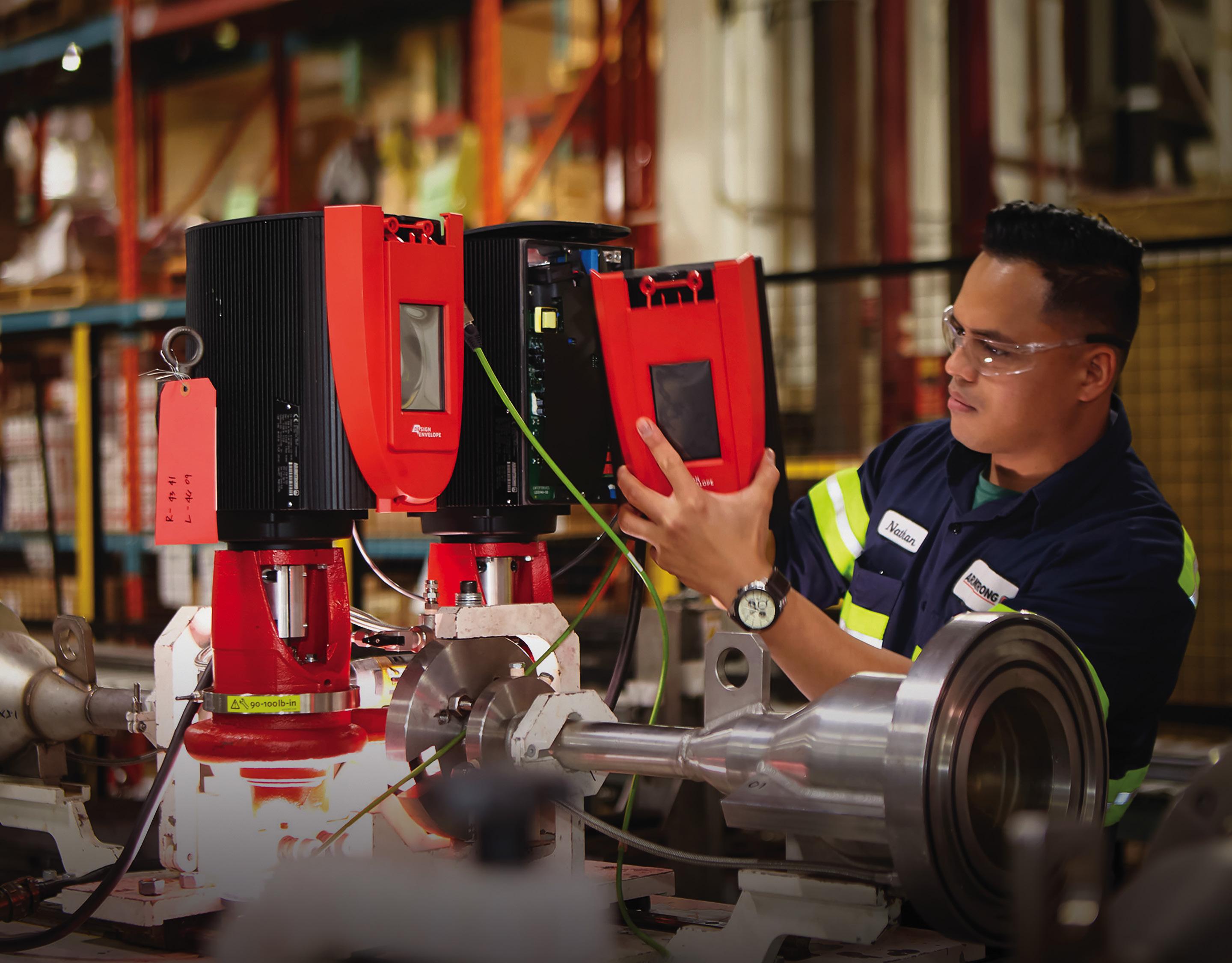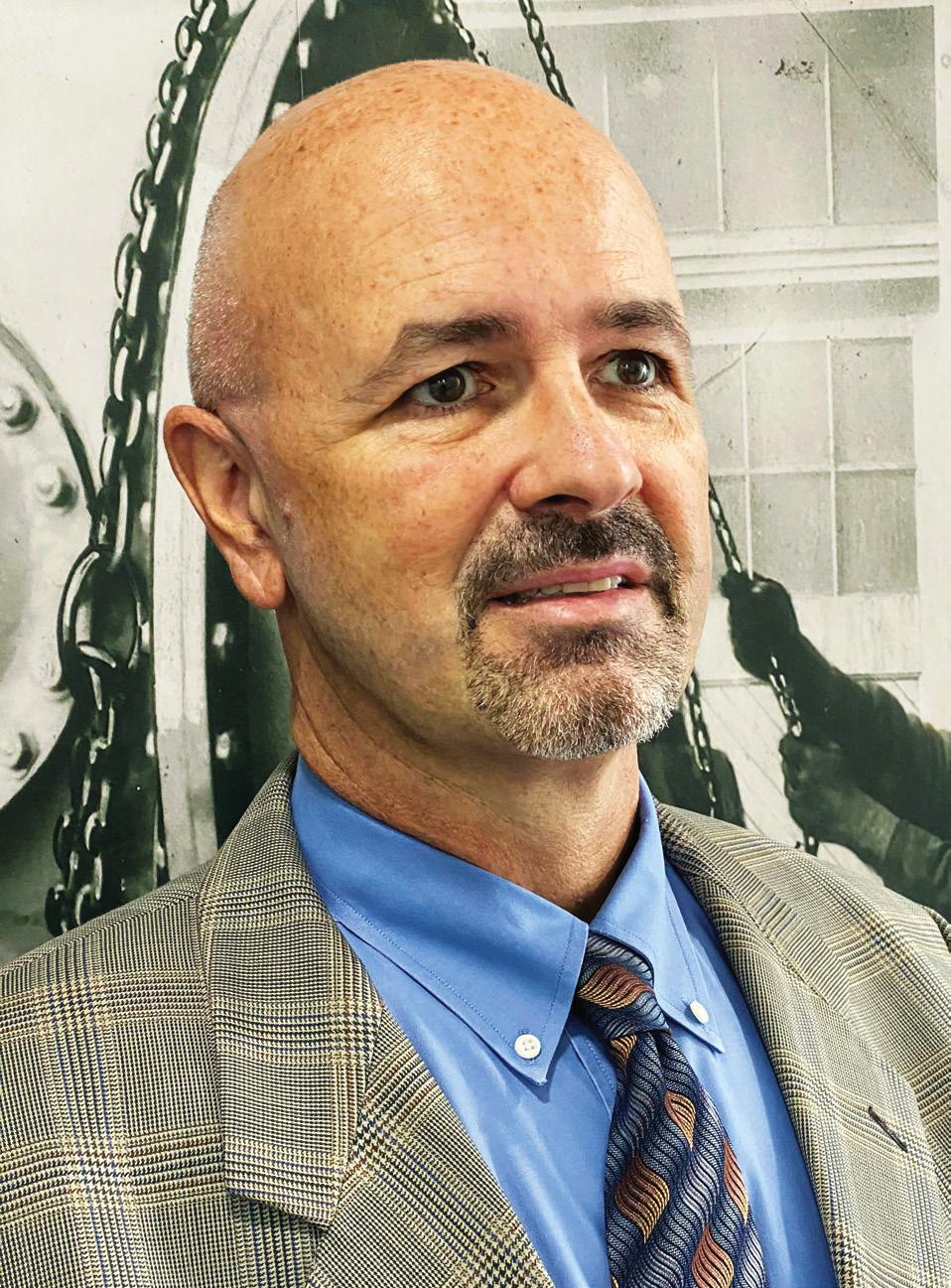
9 minute read
The briefing
Technology
Optimising Energy Efficiency in your building facility
MIDDLE EAST
Kevin Laidler, MEA sales director for Armstrong Fluid Technology, says that energyefficient upgrades for HVAC systems are vital to creating safer, stronger and more sustainable spaces in our cities
Building facilities represent a major portion of energy consumption in the built environment, responsible for about 40% of all energy usage, and a similar proportion of greenhouse gas emissions.
As our cities continue to grow, so does the carbon footprint of our buildings.
Fortunately, however, governments and industry leaders are now placing sustainability at the heart of initiatives for urban development, helping mitigate the environmental impact of building projects. In the Middle East region in particular, sustainability is the driving force behind plans for urban development.
The Dubai Master Plan 2040, for example, outlines efforts to make Dubai one of the greenest cities in the world through transformations in construction, transportation, and infrastructure.
Every building has a role to play in supporting sustainable development, and the performance of HVAC systems is key to determining the environmental impact of a building, since they account for about 35% of total building energy consumption.
As we work towards the ‘greening’ of our cities, the integration of sustainable practices into the construction industry is no longer a value-added benefit, but rather a requirement for projects to gain acceptance and succeed.
Energy management is one such practice, which is vital to the building services industry. Energy management involves proactive performance tracking, management, and optimization of energy consumption in a building, all with the intent of optimizing energy efficiency. Energy management focuses
40%
of all energy usage in the built environment comes from building facilities
on delivering energy upgrades that minimise lifecycle carbon footprint, improve occupant comfort and lower installation and operation costs.
For HVAC systems, approximately 5% of their lifetime carbon footprint can be traced to the manufacturing of components. The other 95% comes from energy usage during the operating life of the equipment. Clearly, the greatest opportunity for carbon footprint reduction lies in improving performance deficiencies.
One challenge we face in managing HVAC systems is ‘performance drift’. When first installed, and even in the first few months, HVAC systems operate immaculately. Over time, however, for a variety of reasons, component efficiency and system conditions ‘drift’ away from the original levels of performance.
Performance drift ultimately leads to energy waste, higher operating costs, and more greenhouse gas emissions. As performance continues to drift, the changes may also result in reduced comfort for occupants.
Traditionally, HVAC systems have been designed as an assembly of independent components with limited connectivity and performance monitoring technology. This design approach exacerbates the effects of performance drift.
In the last decade, technology for HVAC pumps has been transformed to deliver effective energy upgrades and provide up to 70% savings. The introduction of demand-based operations, for example, ensures energy is only consumed as required. The use of parallel sensorless pumping technology enables the pump to respond automatically to system load based on efficiency staging.
These innovations allow pumps to operate at optimum levels and consume energy only on a need-based basis. By consuming energy more intelligently, we can reduce our consumption of fossil fuels and consequently, lower greenhouse gas emissions.
Another key innovation to preserve energy efficiency is Active Performance Management services. This combination of digital capabilities and services relies on cloud-based technology and embedded intelligence to optimise the efficiency of HVAC systems.


Optimum Levels
Technology for HVAC pumps has transformed how they operate, allowing them to reach optimum levels and consume energy only on a need-only basis, says Kevin Laidler.
Making a difference
By embracing innovative energy saving solutions in the building services industry, the HVAC sector can make a difference in sustainable building construction.
Active Performance Management provides real-time and historical data to deliver an accurate system performance analysis and directly demonstrate efficiency and savings. With the advent of sensorless variable speed control, the industry has come to understand that intelligent pumps are highly accurate flow meters that provide valuable insights for building managers and operators.
Data from connected pumps can be used to maintain energy efficiency and manage operating costs through sustained, optimised performance.
Adding Active Performance Management capabilities to your HVAC systems is beneficial for preventing, and even reversing, the loss of system efficiency. Without the ability to analyse data, buildings managers and operators cannot effectively optimise mechanical systems. The software also helps to create safer and more comfortable indoor environments by enabling predictive maintenance. Systems can provide alerts when they detect issues, allowing for early detection to prevent system failures or disruptions.
The reason building operators may hesitate to upgrade is because more sophisticated systems require investment. However, the returns from using more efficient systems are impressive. Simple payback on energy upgrade projects is usually reached within three to five years. Furthermore, the energy savings continue for the life of the system. Properly executed energy upgrades deliver up to 40% savings on energy consumption related to HVAC operation.
If we embrace innovative energy saving solutions in the building services industry, then we can begin to make a difference. Currently, we are experiencing a global shift towards sustainable building construction. As green building legislation becomes increasingly prevalent, mandatory energy reporting seems inevitable. Employing systems with the in-built capability to optimise energy efficiency is extremely beneficial for creating indoor spaces will that support occupants and our planet for generations to come.
Leading by Example
MIDDLE EAST Murad Nazar, UAE business manager, ABB – Electrification Business, shares how the technology leader is helping the region prepare for a sustainable future
With cities and countries coping with the challenge of increasing urbanisation and a desire for a low-carbon future, how is ABB answering the call? At ABB, we are committed to working in collaboration with our customers and suppliers to reduce their own emissions, as we aim to achieve carbon neutrality in our own operations by 2030.
By far the biggest impact we can have in reducing greenhouse gas emissions is through our market leading technologies, which reduce energy use in industry, buildings, and transport – sectors that together account for nearly three-quarters of global energy consumption. As part of our 2030 Sustainability Strategy, ABB has set itself the ambitious target of helping customers to reduce their annual CO2 emissions by more than 100 megatons by 2030. This is equivalent to the annual emissions of 30 million combustion cars. A great example of this energy saving in action is our variable speed drives for electric motors that can reduce electricity consumption by up to 25 percent.
ABB also wants to lead by example by achieving carbon neutrality in its own operations. We will do this by continuing to transition to renewable sources of energy, improving energy efficiency across our factories and sites, and converting our vehicle fleet to electric or other non-emitting alternatives.

Commiting to do better
ABB aims to continuously seek opportunities to reduce emissions, says Murad Nazar.
80%

ABB aims to reduce its CO2 emissions by 80%
We have currently identified areas that can reduce our CO2 emissions by at least 80% and as technologies evolve, we will continuously seek opportunities to do more. By 2019, 30% of the electricity consumed by ABB was generated by renewables and we had cut our emissions by more than 40% compared with a 2013 baseline.
ABB’s commitment to protect the environment is evidenced by its investment and research on e-mobility where we are now the global market leader in e-mobility charging solutions while developing our market share in Europe, Asia Pacific and the US. Further investments such as a new global R&D centre in the Netherlands and the acquisition of Chargedot are helping to cement our position in the market.
The current focus is not just on the research and development of new and innovative charging technologies, but also on the electrification of industrial and commercial fleets and how to adapt the load of the vehicle to the availability of energy in the grid. With these developments ABB is leading the way to a zero-emission mobility future.
In the region, we have also helped install the EV charging infrastructure across various countries like Oman, UAE, Saudi Arabia.
How can smart, digitally connected services and products help improve the efficiencies and performances of utilities, systems, and networks? Being a leader in substation protection and control, ABB is on track to tackle the current challenges for the utility sector: integration of renewable energy, microgrids, energy storage, power conditioning and power quality.
At the centre of this is ABB Ability, our digital platform which combines ABB’s entire digital portfolio, bringing together over four decades of industrial digital leadership, advanced connectivity and the latest digital technologies.
This is being achieved through strategic investment in the development of a new generation of products capable of connecting with the cloud and other devices. From advanced diagnostics that prevent unplanned downtime to the control of individual coal-fired boilers to power plant fleets and to cybersecurity solutions, ABB Ability™ enables utility providers to know more, do more and do better, together.
A study of the evolution of the utility sector in Europe is a way to anticipate Middle East trends, which will see in the next few years. A decade ago, the utility sector used to largely be an integrated model, from conventional utility generation to distribution and supply. The energy landscape, as seen over the years, is a very diverse and impermanent sector. Specialised solutions are replacing aging utility distribution systems and we are also seeing the emergence of pure supply utilities, dedicated to dealing with energy.
Many European and Chinese utilities and investors are transforming the Middle East utility sector, while the speed of change will depend on the regulatory authorities.
How can the democratisation of data help improve operations and performance? What is ABB doing in this regard? As mentioned, ABB Ability solutions allow our customers to combine ABB’s deep domain expertise with connectivity and software innovation to empower real-time, data-driven decisions for safer, smarter operations that maximise resource efficiency. Our extensive portfolio of digital solutions helps organizations automate, optimise and future-proof their business to achieve new heights of performance and drive sustainable progress.
What are some of the projects ABB is working on and how are they examples of utilising digitally connected services and solutions to create a smarter future? In the UAE, we work across buildings, utility firms, oil and gas installations and food and beverage manufacturers to help our customers such as VTTI Fujairah Terminals, Sharjah Electricity and Water Authority (SEWA) and Pure Harvest Farms to understand their energy consumption and manage their energy needs.
ABB Ability Energy and Asset Manager, built on Microsoft Azure, increases operational resilience and energy efficiency from the ground up.
This intelligent cloud solution provides real-time data on energy consumption, power quality, and the health of your electrical system equipment - all in one intuitive dashboard.




